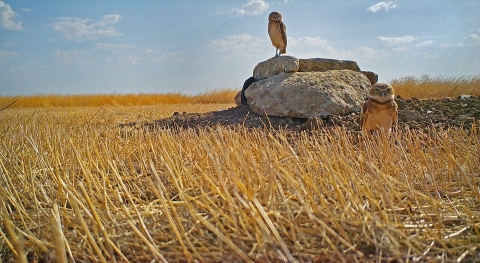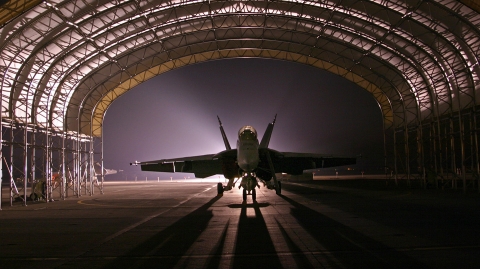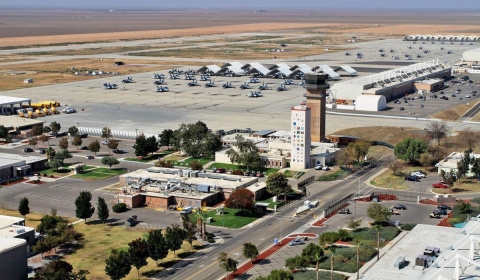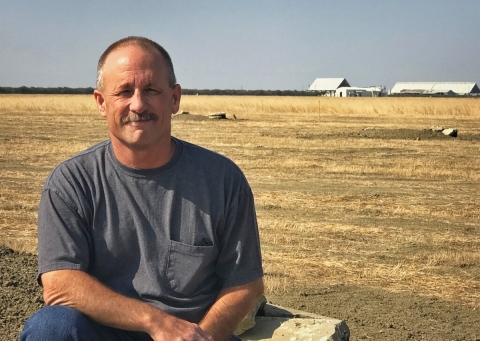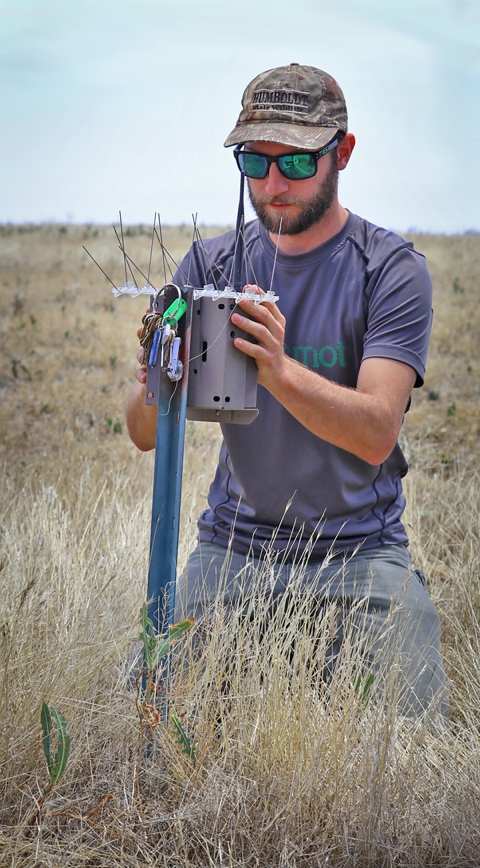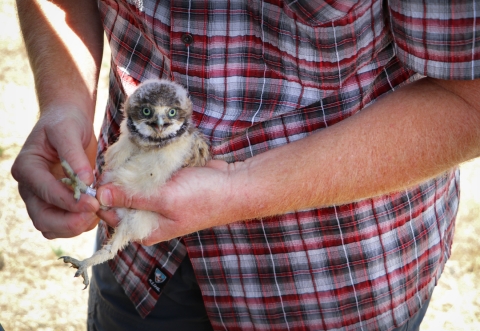You’d think a little burrowing owl would be no match for a supersonic F/A-18 Superhornet fighter jet, but at Naval Air Station (NAS) Lemoore, in Kings County, California, the diminutive owls posed a safety threat.
According to the Federal Aviation Administration, in 2013 alone there were 11,000 bird strikes at 650 airports across the country.
Burrowing owls often use abandoned ground squirrel burrows for nesting. The combination of a ground squirrel presence and the small owls attracts birds of prey like red-tailed and Swainson’s hawks.
These birds of prey are large enough to cause damage to aircraft. But how do you move the owls without harming them and making sure they don’t return to the same place?
“At first, it appeared to be a problem with no solution,” said Nancy Ferguson, Sikes Act coordinator for the U.S. Fish and Wildlife Service’s Pacific Southwest Region. “Finding a way to remove burrowing owls from the flight line areas and relocate them to another portion of the installation, while keeping them from going back to flight line areas took a coordinated effort and employed an out-of-the-box conservation solution.”
In many cases when burrows are destroyed by development or other activities, artificial ones are installed nearby. This passive type of relocation was not viable at NAS Lemoore because the owls would still be too close to active runways.
Tim Schweizer, natural resource manager at NAS Lemoore, worked with the U.S. Fish and Wildlife Service, Air Station personnel and others to devise a strategy to permanently move owls away from runway areas.
“We were able to identify some land at the southern and northeastern portions of the 19,000-acre installation that would be suitable for the owls,” said Schweizer. "These areas would become the receiving sites for relocated owls."
At each site, artificial burrows are created. “We prepare an artificial burrow surrounded by four alternate burrows,” says Schweizer. “We identify where a breeding pair of owls is located near the flight line. Biologists from Kidd Biological, Inc. of Anacortes, Washington, live-trap the owls and move them to a receiving area burrow.”
To keep the owls in their new home, a small enclosure is temporarily placed over the burrow.
“The owls are fed and provided with water until the female lays eggs,” said Schweizer. After a complete clutch of eggs is produced the enclosure is removed from above the artificial burrow.
The owls stay at the site while they incubate and then raise their young; effectively defending a new breeding territory.
This active relocation effort is proving successful. In 2016, the base moved seven burrowing owl pairs, and all but one reproduced.
This year, three additional pairs were moved, and according to Schweizer, “at least one hatched last year and reproduced this year.”
“The base wanted to do the right thing,” said Lydia Bock, public affairs officer for NAS Lemoore. “This conservation effort is working because we have universal buy-in and support. There are literally hundreds of people that made this happen, from personnel at Naval Facilities Engineering Command, Southwest, to the head of Air Operations, up to the Installation Commanding Officer.”
With permission to use some additional habitat in underutilized areas on the installation, there are now about 490 acres available for the owls to safely nest and raise their young.
The active relocation program appears to be very successful. “Although burrowing owls may be seen foraging near the runways, they are not nesting there,” said Schweizer.
Asked how they seem to know not to go back to nest along the runways? Schweizer mused: “As time goes by and work at the airfield continues there is less habitat left at the airfield for the owls to return to, but maybe the owls are talking amongst themselves.”

